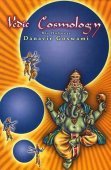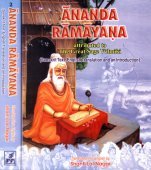Plakshadvipa, Plaksha-dvipa, Plakṣadvīpa: 8 definitions
Introduction:
Plakshadvipa means something in Hinduism, Sanskrit. If you want to know the exact meaning, history, etymology or English translation of this term then check out the descriptions on this page. Add your comment or reference to a book if you want to contribute to this summary article.
The Sanskrit term Plakṣadvīpa can be transliterated into English as Plaksadvipa or Plakshadvipa, using the IAST transliteration scheme (?).
In Hinduism
Purana and Itihasa (epic history)
Source: Wisdom Library: Varāha-purāṇaPlakṣadvīpa (प्लक्षद्वीप) is one of the seven islands (dvīpa), ruled over by Vapuṣmān, one of the ten sons of Priyavrata, according to the Varāhapurāṇa chapter 74. It is also known by the name Kuśadvīpa. Priyavrata was a son of Svāyambhuva Manu, who was created by Brahmā, who was in turn created by Nārāyaṇa, the unknowable all-pervasive primordial being.
The Varāhapurāṇa is categorised as a Mahāpurāṇa, and was originally composed of 24,000 metrical verses, possibly originating from before the 10th century. It is composed of two parts and Sūta is the main narrator.
Source: Google Books: Cultural History from the Vāyu PurānaPlakṣadvīpa (प्लक्षद्वीप):—The seven varṣas in this dvīpa are:—
- Gomeda (or Śātabhaya, or Śāntamaya);
- of Candra the varṣa is Śikhara,
- of Nārada the varṣa is Sukhodaya,
- of Dundubhi the varṣa is Ānanda,
- of Somaka the varṣa is Śiva,
- of Ṛsabha the varṣa is Kṣemaka,
- of Vaibhrāja the varṣa is Dhruva.
Here the Devas, Gandharvas, Siddhas and the Cāraṇas rejoice. The corresponding seven rivers in these seven varṣas are:
- Anutaptā,
- Sutaptā,
- Niṣpāpā,
- Muditā,
- Kratu,
- Amṛtā
- and Sukṛtā.
Thus is the river Gaṅgā there with her seven courses (?). These rivers have their own numerous tributaties and they flow (towards the region ?) where the rain falls.
The following janapadas drink the waters of these rivers:
- Śubha (?),
- Śāntavaha,
- Pramada (?),
- Śiva,
- Ānanda,
- Dhruva
- and the Kṣemaka.
They follow the varṇāśrama, are ever healthy and free from any disease and fear. Here the yugas are not obtained and the conditions are always as in the Tretā age. The people enjoy a life of 5000 years. There is a great Plakṣa tree in this dvīpa whence it has derived its name. This tree is worshipped.
Source: archive.org: Puranic EncyclopediaPlakṣadvīpa (प्लक्षद्वीप).—One of the seven dvīpas (islands). (See under Saptadvīpa.)
Source: Cologne Digital Sanskrit Dictionaries: The Purana IndexPlakṣadvīpa (प्लक्षद्वीप).—Twice as broad as the Jambūdvīpa and thrice its width and in circumference; Agni, the God of fire shines there; its first ruler Idhmajihva divided it among his seven sons after whose names the countries became known; there are several rivers and (seven vā p.) mountains; people are engaged in sun worship; surrounded by the sea an age of 5000 (0) years and enjoy always the felicities of the tretāyuga wealth, health, etc; in its midst is the Plakṣa tree sacred to Śiva.1 Another version—one of the nine continents, Medhātithi being the first king. Divided it among his seven sons, named as Śantahaya, Śiśira, Sukhadeya, Ānanda, Śiva, Kṣemaka, and Dhruva. Gomeda was one of its seven mountains. The four castes are named aryaka, kurarā, vidiśya and bhāvina. Viṣṇu resides here as Soma.2
- 1) Bhāgavata-purāṇa V. 1. 32; 20. 1-7; Brahmāṇḍa-purāṇa II. 14. 11-15; 19. 1-31, 138; Vāyu-purāṇa 49. 1-28.
- 2) Viṣṇu-purāṇa II. 1. 12; 2. 5; 4. 2-20.

The Purana (पुराण, purāṇas) refers to Sanskrit literature preserving ancient India’s vast cultural history, including historical legends, religious ceremonies, various arts and sciences. The eighteen mahapuranas total over 400,000 shlokas (metrical couplets) and date to at least several centuries BCE.
Kavya (poetry)
Source: Shodhganga: The Kavyamimamsa of RajasekharaPlakṣadvīpa (प्लक्षद्वीप) is the name a locality mentioned in Rājaśekhara’s 10th-century Kāvyamīmāṃsā.—One of the seven dvīpas in the world. It is the first dvīpa from Jambū, which is situated in the middle of the earth.

Kavya (काव्य, kavya) refers to Sanskrit poetry, a popular ancient Indian tradition of literature. There have been many Sanskrit poets over the ages, hailing from ancient India and beyond. This topic includes mahakavya, or ‘epic poetry’ and natya, or ‘dramatic poetry’.
Vaishnavism (Vaishava dharma)
Source: VedaBase: Śrīmad BhāgavatamPlakṣadvīpa (प्लक्षद्वीप) encircles Jambūdvīpa, according to the Bhāgavata-purāṇa (Śrīmad Bhāgavatam) verse 5.20.—Accordingly, “[...] Jambūdvīpa is itself surrounded by Plakṣadvīpa. The breadth of Plakṣadvīpa is twice that of the saltwater ocean — in other words 260,000 yojanas [1,600,000 miles]. On Plakṣadvīpa there is a tree shining like gold and as tall as the jambū tree on Jambūdvīpa. At its root is a fire with seven flames. It is because this tree is a plakṣa tree that the island is called Plakṣadvīpa. Plakṣadvīpa was governed by Idhmajihva, one of the sons of Mahārāja Priyavrata. He endowed the seven islands with the names of his seven sons, divided the islands among the sons, and then retired from active life to engage in the devotional service of the Lord. [...]”.

Vaishnava (वैष्णव, vaiṣṇava) or vaishnavism (vaiṣṇavism) represents a tradition of Hinduism worshipping Vishnu as the supreme Lord. Similar to the Shaktism and Shaivism traditions, Vaishnavism also developed as an individual movement, famous for its exposition of the dashavatara (‘ten avatars of Vishnu’).
Languages of India and abroad
Sanskrit dictionary
Source: Cologne Digital Sanskrit Dictionaries: Monier-Williams Sanskrit-English DictionaryPlakṣadvīpa (प्लक्षद्वीप):—[=plakṣa-dvīpa] [from plakṣa] m. n. Name of a Dvīpa, [Viṣṇu-purāṇa] (cf. [Indian Wisdom, by Sir M. Monier-Williams 420]).
[Sanskrit to German]
Sanskrit, also spelled संस्कृतम् (saṃskṛtam), is an ancient language of India commonly seen as the grandmother of the Indo-European language family (even English!). Closely allied with Prakrit and Pali, Sanskrit is more exhaustive in both grammar and terms and has the most extensive collection of literature in the world, greatly surpassing its sister-languages Greek and Latin.
See also (Relevant definitions)
Partial matches: Plaksha, Dvipa.
Full-text (+65): Urdhvayana, Shakabhava, Kramu, Viryadhara, Satyanga, Vivimsha, Kshemaka, Yavasa, Yavayasa, Patanga, Saumanasya, Tridiva, Saptadvipa, Mudita, Ritambhara, Gomedavarsha, Nrimna, Sukhin, Suprabhata, Sutapta.
Relevant text
Search found 17 books and stories containing Plakshadvipa, Plaksha-dvipa, Plakṣadvīpa, Plaksadvipa, Plakṣa-dvīpa, Plaksa-dvipa; (plurals include: Plakshadvipas, dvipas, Plakṣadvīpas, Plaksadvipas, dvīpas). You can also click to the full overview containing English textual excerpts. Below are direct links for the most relevant articles:
The Devi Bhagavata Purana (by Swami Vijñanananda)
Chapter 12 - On the narration of Plakṣa, Śālmala and Kuśa Dvīpas < [Book 8]
Chapter 4 - On the narration of the family of Priyavrata < [Book 8]
Puranic encyclopaedia (by Vettam Mani)
The Linga Purana (by J. L. Shastri)
Chapter 46 - Dvīpas and their Lords < [Section 1 - Uttarabhāga]
Chapter 53 - Geography of the World < [Section 1 - Uttarabhāga]
The Brahma Purana (by G. P. Bhatt)
The Vishnu Purana (by Horace Hayman Wilson)
Chapter IV - Account of kings, divisions, mountains, rivers, and inhabitants of the other Dvipas < [Book II]
Chapter I - Descendants of Priyavrata, the eldest son of Svayambhuva Manu < [Book II]
Brihad Bhagavatamrita (commentary) (by Śrī Śrīmad Bhaktivedānta Nārāyana Gosvāmī Mahārāja)
Verse 2.2.8-9 < [Chapter 2 - Jñāna (knowledge)]
Verse 2.4.142-144 < [Chapter 4 - Vaikuṇṭha (the spiritual world)]
Related products

